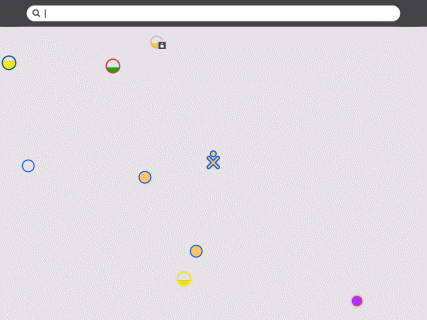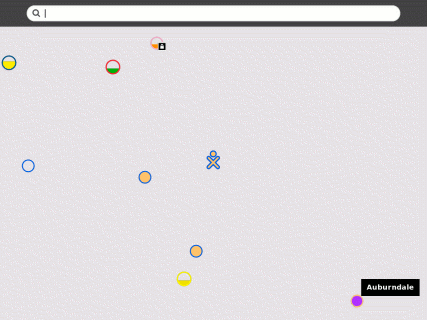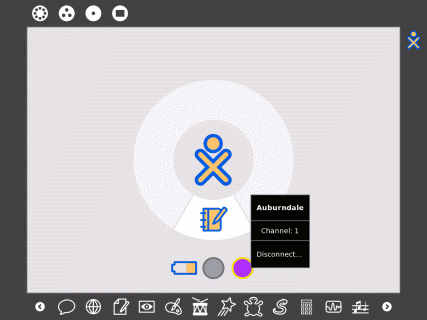Getting Started
About Sugar
Sugar is a different desktop environment to what is normally used in Windows, OS X or other Linux distributions. It is conceived as a tool to allow kids to learn interactively. The first thing that a child sees, therefore, is not a hard disk or a trash can — it’s the other kids in the “neighborhood.” Programs and Applications are called Activities, many of which allow for collaboration between users who are connected to each other by Wifi or through a Jabber network. Sugar developers are encouraged to write activities with collaborative elements that are automatically enabled.
Sugar is developed in Python and runs on Linux Kernel 2.6.22 and the Fedora 7 base environment.
Getting started
You can explore the Sugar interface in the Getting Started guide.
Connecting To The Internet
There are three ways to connect to the Internet:
- wireless access point (WiFi hotspot);
- “School Server” mesh network; or
- “simple” mesh network, which lets you collaborate directly with other XOs.
You make your connection from the Neighborhood view. Your current connection status is shown on the Home view. (The XO was designed for wireless access because in the developing world, wireless is actually the fastest, most reliable, and least expensive way to connect.)
Step 1: Go to the Neighborhood view
Click on ![]() symbol (round with 8 dots), found in the upper-left corner of the keyboard, to go to the Neighborhood view. Here you can connect to an wifi access point and see, if connected to a mesh or Jabber network, other Sugar users.
symbol (round with 8 dots), found in the upper-left corner of the keyboard, to go to the Neighborhood view. Here you can connect to an wifi access point and see, if connected to a mesh or Jabber network, other Sugar users.
You will see this screen.
Your Sugar user, represented by the XO icon, is in the centre of the screen.
Step 2: Choose an access point
Networks (access points) are represented by circles on the Neighborhood view. Networks can be identified by hovering over the circles: an access point is identified by its name (ESSID); a mesh-portal point is identified by its channel number (1, 6, or 11). You can also search for an access point by name in the search bar at the top of the page.
Signal strength is indicated by the fill-level of the circle. The color of the circle is based upon the name of the access point. Networks that are locked are identified by a badge.
Step 3: Activate a connection
To activate your network connection, click once inside the circle that corresponds to your chosen access point. (To “click”, press once on the left-hand touchpad button—the button with the × symbol at the front of the touchpad.) While the XO is trying to establish the connection, the inside of the circle will blink. Once the connection is established, the outside of the circle will turn white. If for some reason the connection failed, the circle will stop blinking. Sometimes it is necessary to try several times before the connection is established
If the access point requires a key, you will be prompted. Note that different types of access points require different types of keys: be sure to select the correct type from the pull-down menu that is presented. Some access points (such as the Apple Extreme®) will only work with a hexadecimal value. If you have a password or passphrase, go to Hex Converter to get the hex key. Also, with the Apple Extreme you need to set “shared key”. Most other access points prefer the “open key” setting when using WEP.
Currently, we do not support WPA-enabled WiFi access points; we anticipate including WPA support in early 2008.
Step 4: Checking the connection
Click on ![]() symbol, found in the upper-left corner of the keyboard, to go to the Home view to check your wireless connection.
symbol, found in the upper-left corner of the keyboard, to go to the Home view to check your wireless connection.
By hovering over the circle icon, you will find details about your connection status.
If you don't specify a network, Sugar will attempt to join a simple mesh network, enabling you to collaborate with other Sugar users, but not access the Internet.
For more information about connecting, please see the Support page in the OLPC wiki.


